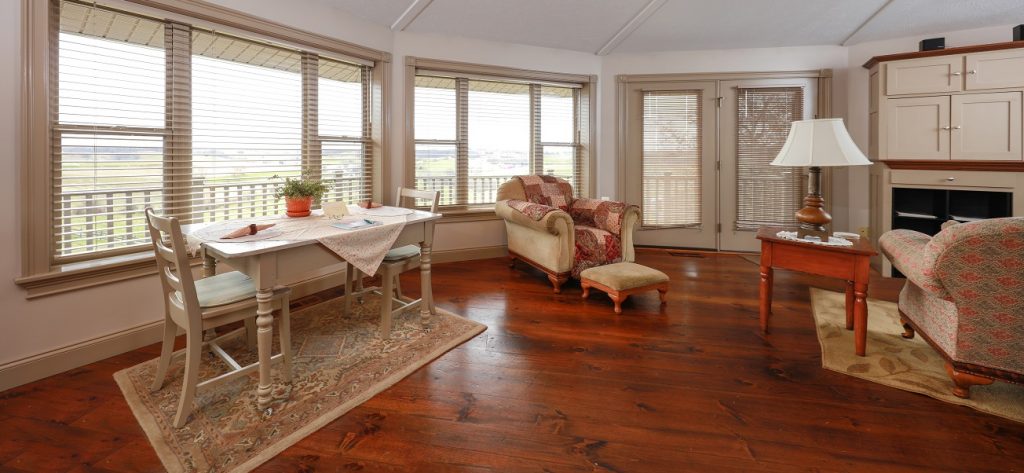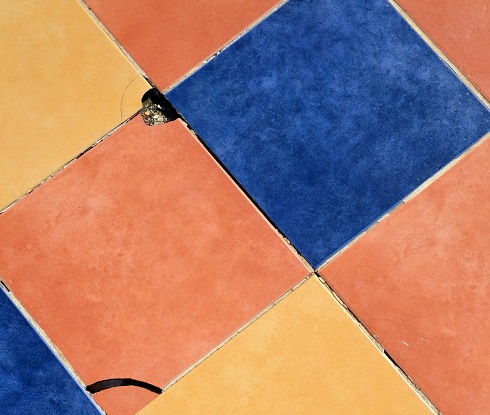
Are you watching the value of your home over time, and seeing your equity rise? Are you planning to have your home appraised so you can set an asking price for it, or borrow against its value?
A few simple fixes, upgrades and flourishes can help you sustain your home equity over time, or help your home ace its next appraisal. Here, we’ve put together a checklist of things you can do to get the most value for your effort and investment.
Condition, Condition, Condition.
First, consider a scenario — such as a loan application — where you actually need an appraiser to put a valuation on your home. You’ll want to show the appraiser your home in its best light, as though it were already on the market. You’ll take time to tidy up every space, expecting the appraiser to snap photos of the walk-in storage spaces as well as each room.
All good moves, but what is your goal for the appraisal? What value do you believe your home has? Come up with a figure, and don’t hesitate to let the appraiser know what you’re thinking. If you’re a little off, the expert can tell you what might enhance your home’s value. (But note: your property taxes will tend to rise right along with your home value!) The appraiser should already have access to prices for comparable recent home sales, and should be looking at the assessor’s valuation for local property taxes.
Add a document of your own to those resources. Get a list ready, showing all your upgrades and the month and year each was done, plus the costs of materials and work. It’s a great idea to keep a document on your computer, and update the page whenever you do significant repairs, so you’re ready with an organized list when the time comes to print it.
Note your bathroom renovations, new kitchen countertops and cabinets, new flooring, solar panels, and so forth. The appraiser can keep a printed copy for reference when drafting the report. If you know of anything in your property assessment that’s off — perhaps you have a few more square feet than the assessment shows, for example — explain that.
Pro tip: If you have smart technology or energy-efficient, green upgrades, don’t assume they’ll be given and added dollar value in your appraiser’s report. Prepare to let the appraiser know their real value to buyers in your area who want them. For example, Fannie Mae has an appraisal tool to show that solar panels, if fixed on the house, constitute added value. Have a simple breakdown of costs and energy savings on the sheet you prepare for the appraiser.
Now, we’ll look at the kind of repairs and touchups to attend to, so you keep your equity high the entire time you live in your house. Even if they don’t actually raise your home’s market value, new or well-maintained systems still have positive impacts on your home’s overall condition — and that will raise it.
Exterior Beauty That Truly Adds Value

Of course, a clean, cobweb-free exterior goes a long way in reflecting a cared-for home. So do moss-free walkways, working outdoor lights, locks that don’t stick, and ship-shape mailboxes, handrails, and decks.
Are eco-friendly touches appreciated in your area? Consider having a native landscape professionally created. Local plants score high for popularity among buyers, reports Residential Contractormagazine. Native gardens resist disease and bugs, yet attract butterflies and pollinators. They flourish in your home’s surrounding climate and weather conditions. After they’re established, they largely maintain themselves without lots of water or fertilizers, so they gradually turn from an expense into savings. Plus, they don’t pose issues for anyone’s chemical sensitivities, and they’re gentler on children and pets.
Now, back to basics. Got a chimney? Have it professionally checked. And have it cleaned every two years if you use your fireplace.
Ask your landscaper to clear your gutters and check the downspouts so water isn’t ponding after a storm. Better still, have a reputable roofer clear the gutters and examine your entire roof to be sure it’s waterproof and weatherproofed.
Finally, pack up the old yard tools and give the patio furniture a coat of rust-proofing paint. Consider painting the shutters to spruce up the exterior.
Details That Ensure a Safe and Health-Affirming Home
If your heating and air conditioning system is getting up in years, put HVAC maintenance and possible replacement on your checklist. Old units can physically deteriorate around the base, causing concrete erosion and sending impure air to circulate through the home. Get in the habit of scheduling seasonal system checkups. Dirty or dislodged filters need attention, too. A filter that removes viruses, bacteria, and mold from your interior atmosphere is not a luxury. And you don’t need to wait for a system replacement to install a UV filter.
Yearly, preferably before winter sets in, have a pro check your gas and water systems. Check the water shut-off valves and drains for the bathrooms, and inspect clothes washer and dishwasher hoses each year, too. Keep the stove fan screen clean.
An old electrical panel should be updated to match up to current codes. And don’t forget to check the batteries in your smoke alarms and carbon monoxide alert devices.
Finally, the flourishes…
Interior Touch-Ups That Really Count
If you have heating grates on the floor, why not clean and paint them? This simple fix greatly improves the look of a floor. And do paint (or at least wash) the walls, and replace the outlet covers, so everything has a new, put-together feel.
Got a hankering to make some splashy improvements? Kitchens and bathrooms get the biggest bang for the buck when an owner is considering what to update. This is because energy-efficient appliances and fixtures are so important to the value of the home. It’s also because in these spaces a clean, fresh appearance really matters.
Do keep both your bathtub and shower. Some people prefer showers — especially older folks who might not be fond of getting in and out of bathtubs. Others want tubs — especially parents of young children and international buyers. So, it’s best not to remove a bath or a showerhead from a bathroom.

Need more ideas? Consider what buyers actually find valuable. Visit a real estate site and look through the photos of homes for sale in your area. Consider the style of the bathrooms and kitchens, and think about what upgrades have real value in your market. And while we’re on the subject, did you really mean to keep that carpet forever? Why not expose and finish the hardwood for a timeless appeal and a clean look? Unless you happen to live in a hot, humid climate, wood floors can boost the sales price of your home up to 2.5% according to the National Association of REALTORS®.
Check your windows, window screens, and doors. A lived-in home gets wear and tear in these areas. Take care of the little things. And of course, keep walls looking fresh and welcoming (yes, neutral hues are best). Be sure your doors are well sealed, and the baseboards are spotless. Tighten loose drawers and get new handles and knobs. Take care of those chipped or cracked tiles.
It’s Not a List of Chores. It’s Equity-Building.
Home maintenance is a lot more appealing when you regard it as building your equity. You might find it helpful to create a budget, much as a commercial office would, and allocate a set amount per month. A portion can go to for basic repairs, and another amount can become a savings fund for the large replacements and renovations.
If you live in a condo or a co-op, you already have a good portion of your maintenance funds set aside automatically, as you pay your monthly homeowners’ association (HOA) dues. Those monthly dues pay for waste management, landscaping, roof repair and the upkeep of the unit owners’ shared areas. You’re only responsible for keeping up the interior of your unit. And although it’s possible the real estate market could slow in the months ahead, condo properties tend to appreciate in value over the long run, just as homes do.
So, when you consider that home ownership is one of the best routes to wealth-building, home maintenance stops being a chore and becomes an investment.
Many happy returns!
Further References
Wendy Helfenbaum, Selling Your Home? Don’t Neglect These 6 Maintenance Tasks — Or Else Realtor.com (Feb. 2018).
Erik J. Martin, Home Maintenance: Essential for Preserving Home Value, The Mortgage Reports (May 2018).
Photo credit: Randy Fath, Calvin Mano, and Zbysiu Rodak via Unsplash.
